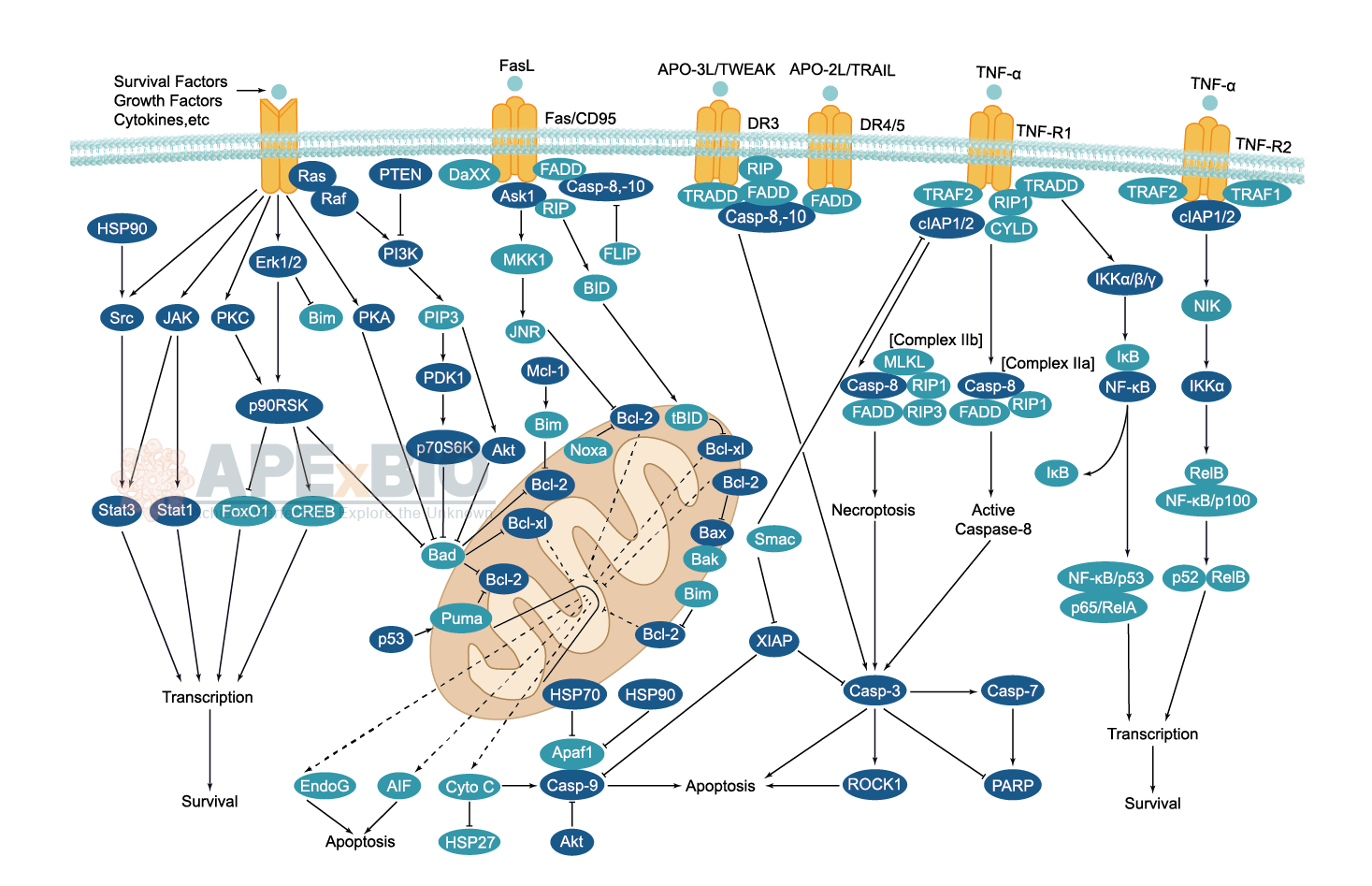Apoptosis
Apoptosis, also known as programmed cell death, is rigorously controlled process of cell death that leads to phagocytosis of unwanted cell. It is triggered after sufficient cellular damage and activated through extrinsic or intrinsic pathways. The intrinsic pathway is mainly occurs via release of cytochrome c from the mitochondria and regulates mitochondrial outer membrane permeabilization by Bcl-2 family proteins. The extrinsic pathway is induced by ligand binding to death receptor, such as Fas, TNFαR, DR3, DR4, and DR5. Caspases then cleave target proteins and nuclear lamins to promote DNA degradation, resulting apoptotic cells undergo phagocytosis. In addition, p53 has the ability to activate intrinsic and extrinsic pathways of apoptosis by inducing transcription of several proteins like Puma, Bid, Bax, TRAIL-R2, and CD95.
Some Inhibitors of apoptosis proteins (IAPs), such as XIAP/BIRC4 and Bruce/BIRC6, can block casapse activity through direct binding, while other IAPs, such as cIAP1/BIRC2, cIAP2/BIRC3, act as ubiquitin ligases that target caspases for ubiquitin-mediated degradation. Apoptosis is essential for growth, development and aging in multicellular organisms. Any alterations or abnormalities occurring in apoptotic processes contribute to development of human diseases, including cancer.
-
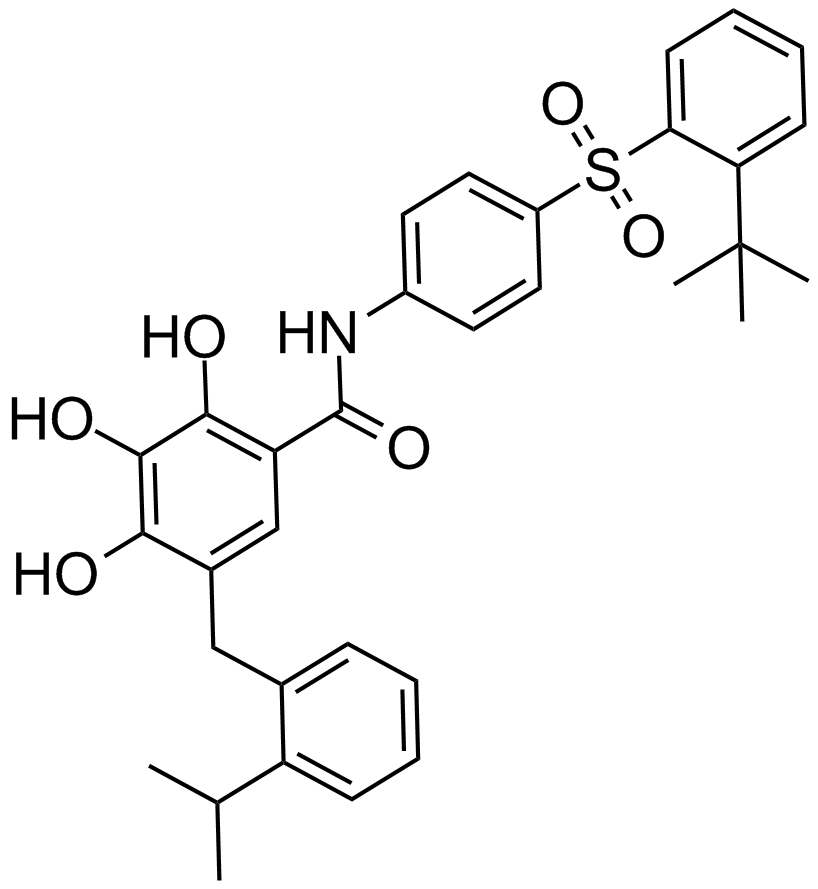 A4234 TW-371 CitationTarget: Bcl-2|Bcl-xl|Mcl-1Summary: Bcl-2 inhibitor, inhibits Bcl-2,Bcl-XL and Mcl-1
A4234 TW-371 CitationTarget: Bcl-2|Bcl-xl|Mcl-1Summary: Bcl-2 inhibitor, inhibits Bcl-2,Bcl-XL and Mcl-1 -
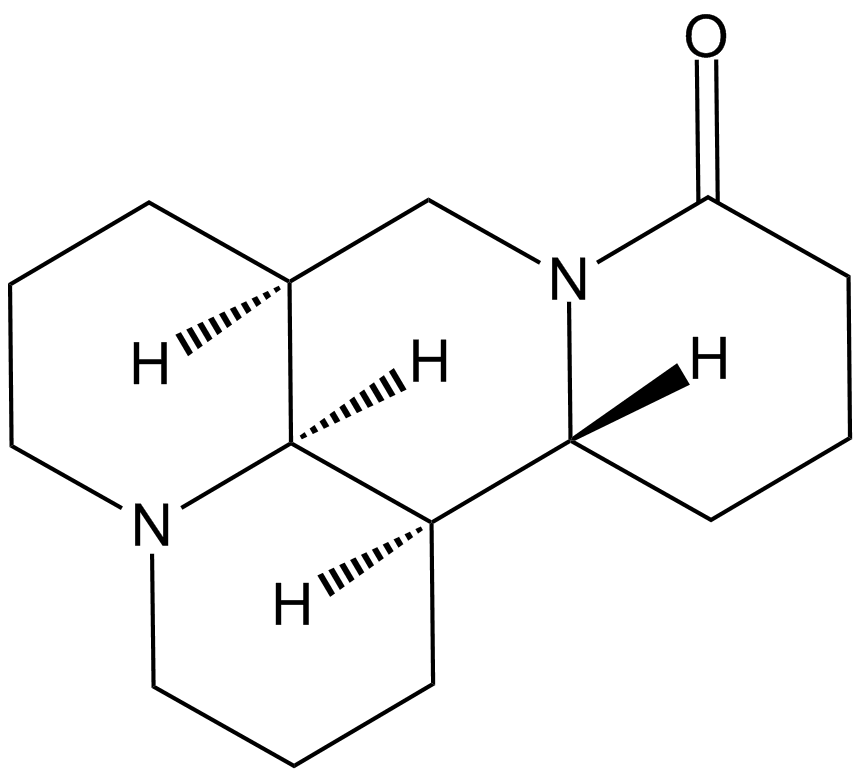 A3583 MatrineSummary: Alkaloid found in Sophora plant
A3583 MatrineSummary: Alkaloid found in Sophora plant -
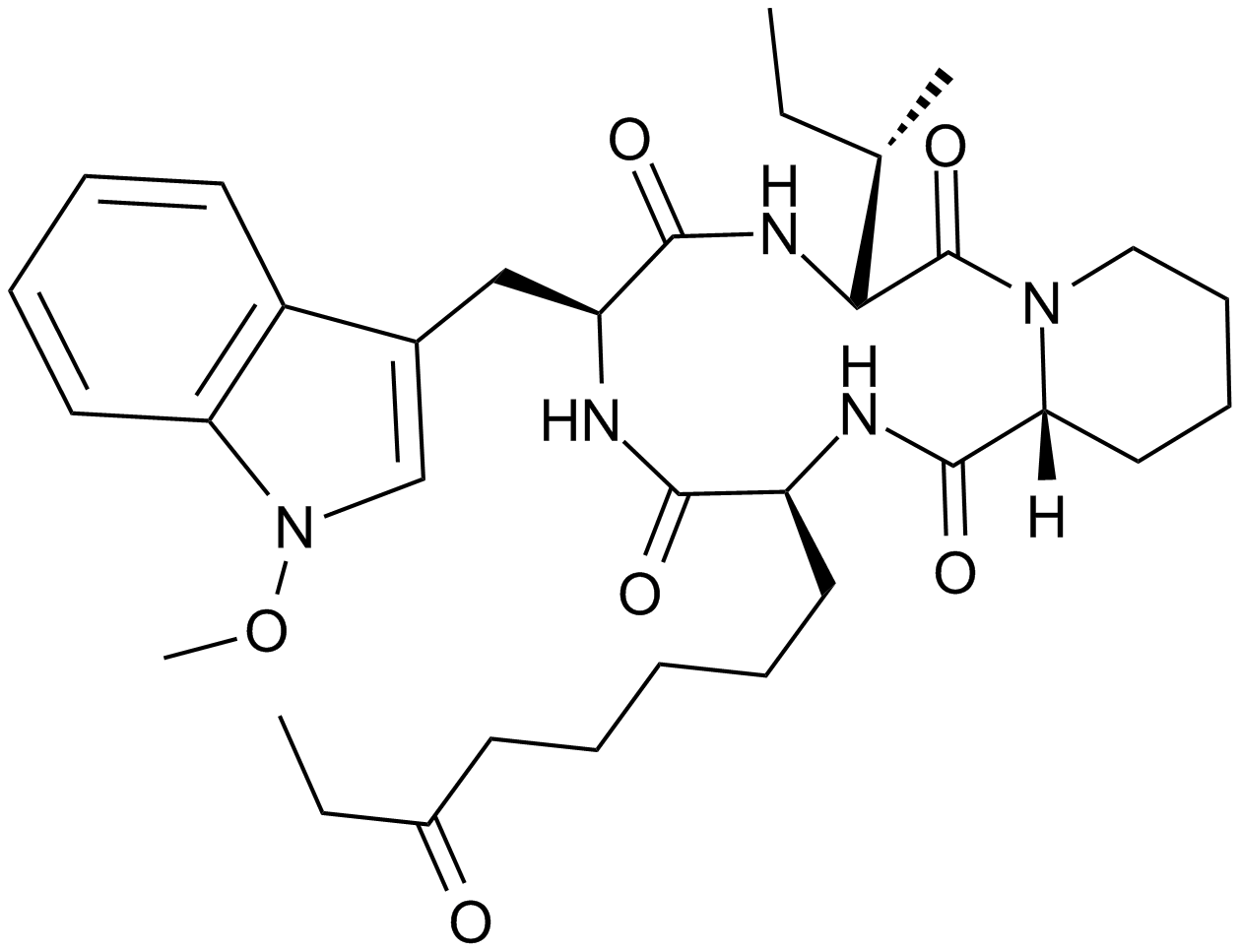 A8176 Apicidin2 CitationTarget: Histone Deacetylases (HDACs)Summary: Potent HDAC inhibitor
A8176 Apicidin2 CitationTarget: Histone Deacetylases (HDACs)Summary: Potent HDAC inhibitor -
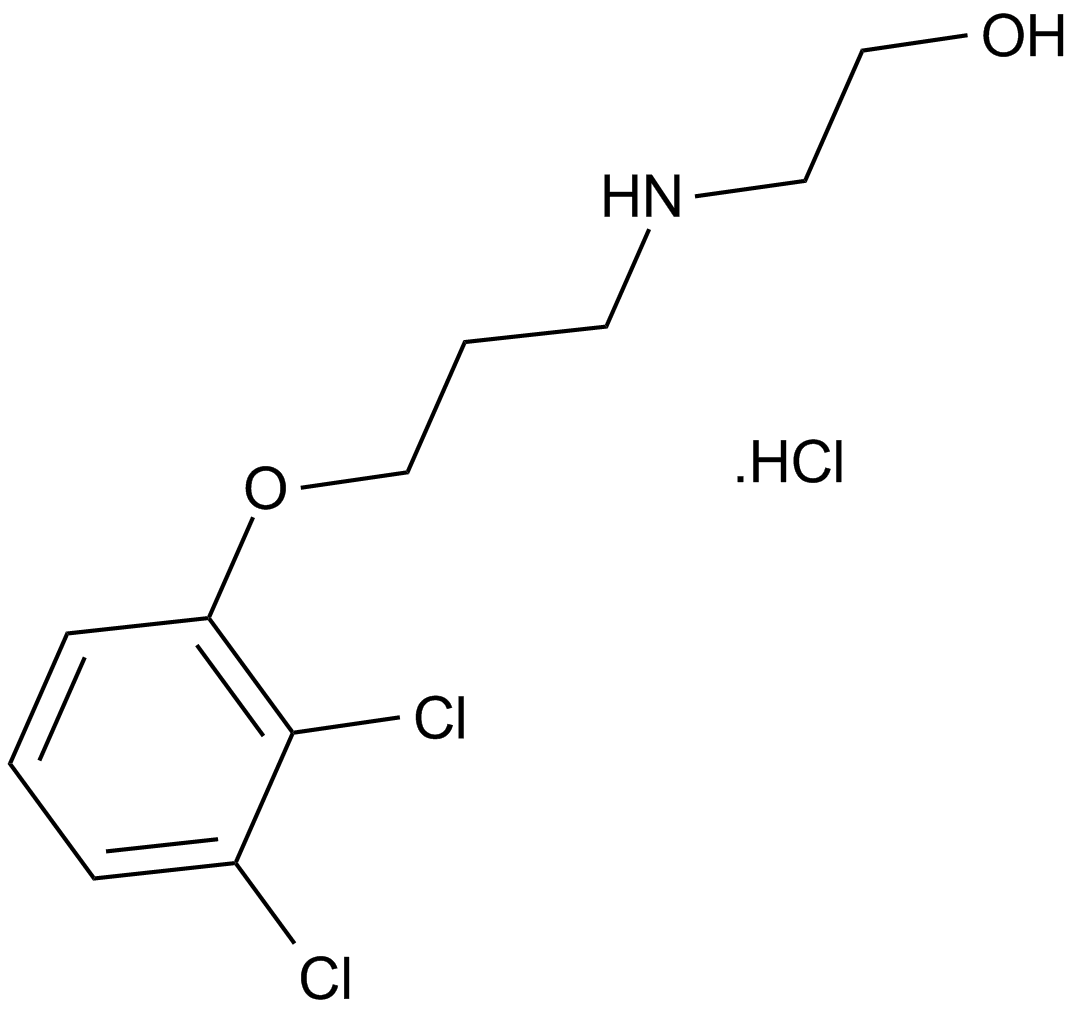 A4447 2,3-DCPE hydrochlorideTarget: Apoptosis InducersSummary: Bcl-XL protein expression downregulator
A4447 2,3-DCPE hydrochlorideTarget: Apoptosis InducersSummary: Bcl-XL protein expression downregulator -
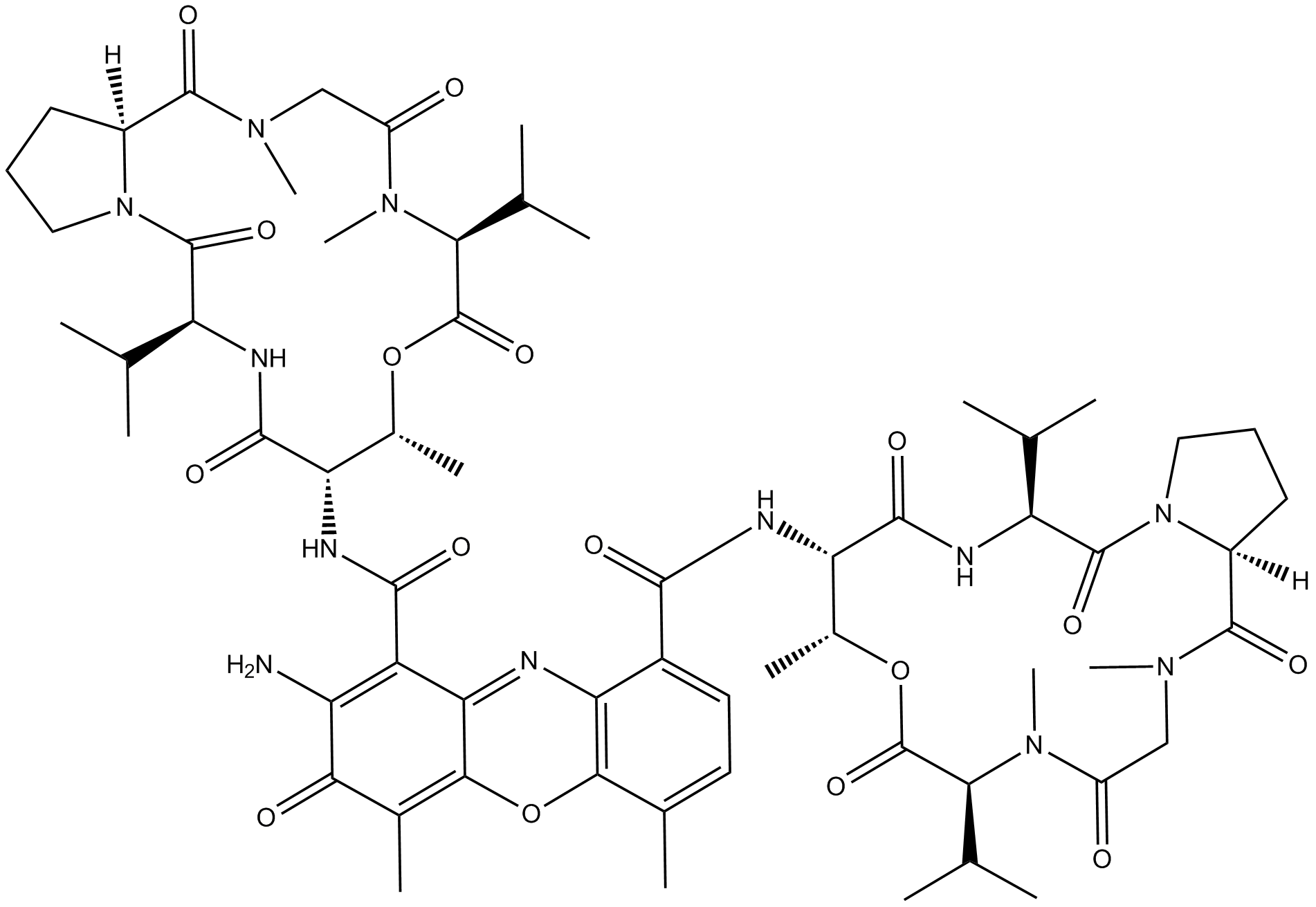 A4448 Actinomycin D15 CitationSummary: RNA polymerase inhibitor
A4448 Actinomycin D15 CitationSummary: RNA polymerase inhibitor -
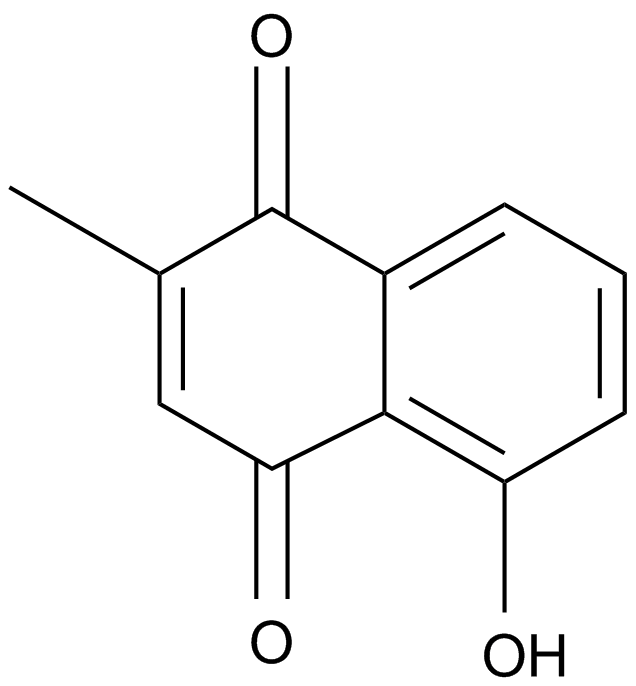 A4456 PlumbaginSummary: Anticancer agent
A4456 PlumbaginSummary: Anticancer agent -
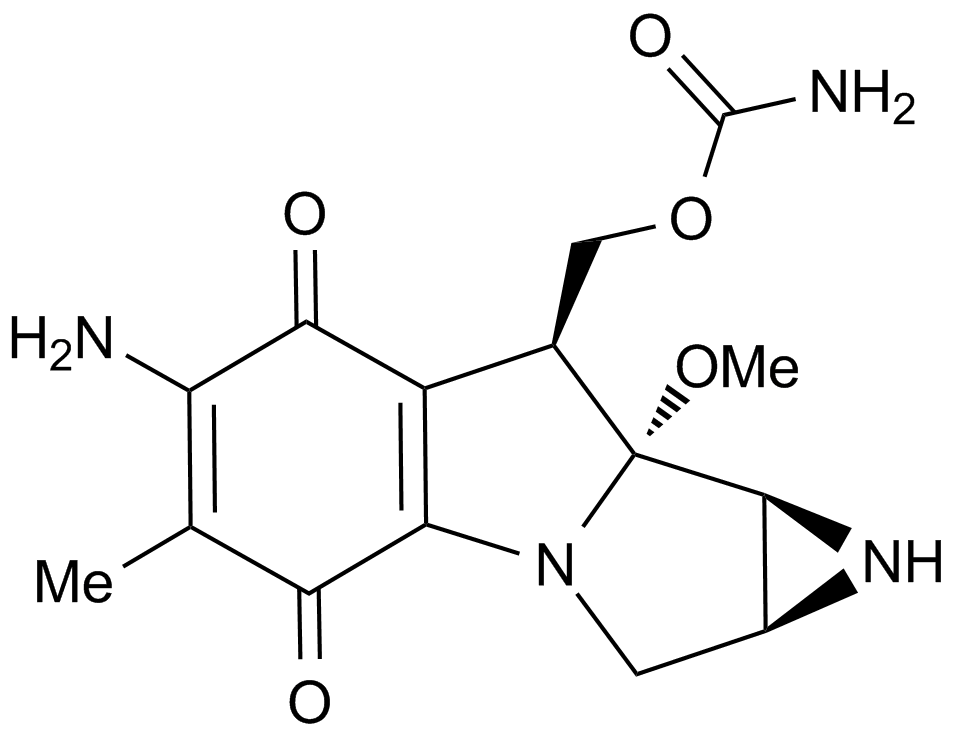 A4452 Mitomycin C3 CitationSummary: Inhibits DNA synthesis,antibiotic and antitumor agent
A4452 Mitomycin C3 CitationSummary: Inhibits DNA synthesis,antibiotic and antitumor agent -
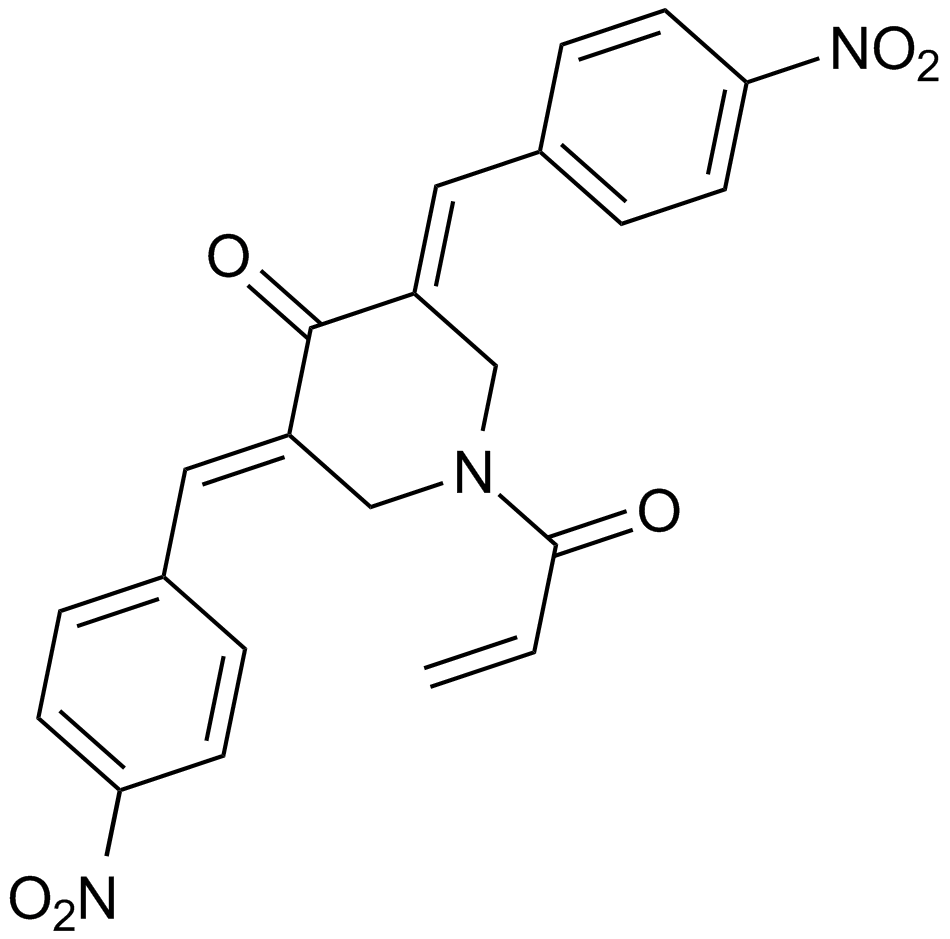 A4453 NSC 687852 (b-AP15)Target: Deubiquitinating enzymes (DUBs)Summary: 19S regulatory particle Inhibitor
A4453 NSC 687852 (b-AP15)Target: Deubiquitinating enzymes (DUBs)Summary: 19S regulatory particle Inhibitor


